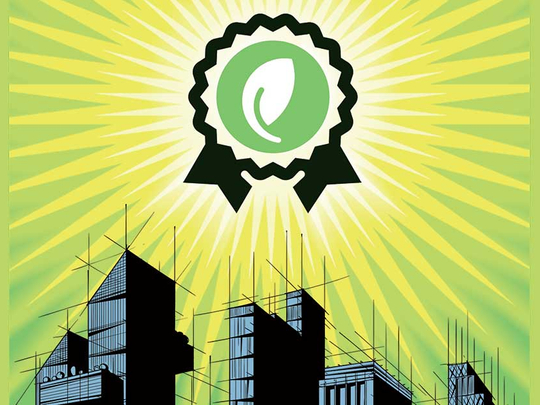
The building sector has enormous potential to mitigate the impact of climate change in both developed and developing countries according to the UN Environment Programme. Businesses, governments, and building owners have begun to retrofit millions of older buildings in a bid to cut down on energy use and reduce greenhouse gas emissions.
Building retrofits are also one of the most cost-efficient way to combat climate change while saving on rising power bills.
If no measures are taken to improve energy efficiency in the building sector, energy demand is expected to rise every year. Change should begin at the very designing stage of the building, followed by construction or overhauling of old buildings.
Failing to do so could lead to inefficient energy management for decades to come. Since buildings in the UAE consume a significant percentage of total energy — particularly for heating and cooling and because existing buildings comprise the largest segment of the built environment — it is important to create awareness on energy efficiency practices and initiate more retrofit projects to reduce energy consumption.
Overhauling of older structures can significantly reduce the energy needed to heat and cool them, which is probably the only way to substantially reduce the energy footprint of the existing building stock. Systems must be updated appropriately to maintain a balance between the need for energy and water savings with the character of the original building fabric.
Studies have found that although many individuals have a rough idea on how much they spend on fuel bills, a clear understanding on how much energy they use to power their households — in short, their home’s carbon footprint — is absent.
These days, most end users are aware that they need to cut down on energy consumption with more energy-efficient homes. In fact, top-rated appliances and sound energy conservation measures can help save money and energy at households.
But that is still not adequate. Though many new buildings are built as Net Zero energy, bettering the energy efficiency of already existing buildings to suit today’s requirements is the need of the hour to make a significant impact on overall energy consumption.
In addition to conserving energy and saving costs, retrofitting of existing buildings improve indoor environmental quality, decrease moisture penetration, and reduce mould, enhancing health and productivity of occupants.
A single design strategy that will meet multiple design objectives might be less costly to operate, will increase in value, last longer, and contribute to a better, healthier environment. Accessibility, safety and security are three important factors to be considered when deciding on a retrofit package.
For a retrofitting initiative to be truly successful and contributory to efforts aimed at achievement of sustainability, begin with developing a plan to optimise the recycling and reuse of demolition debris and construction waste.
Evaluation of occupancy patterns, application of daylight, heating, ventilation, and air-conditioning and lighting sensors in appropriate locations should be the next step. Integrate energy-efficient lighting into the project to suit functions of the spaces before deciding on feasible alternatives to reduce heating and cooling loads.
Renewable energy options including solar shading devices for windows and doors and photovoltaic (PV) devices must be considered. Balancing the project’s sustainable goals with its security goals — including protecting the building and its occupants from natural and man-caused disasters — is another major aspect of a retrofit exercise.
Smart meters can also be installed to monitor real-time consumption, control demand and increase occupants’ accountability.
With the government sector leading the adoption of retrofit projects across Dubai, we are optimistic that more businesses will follow suit in the emirate. Major projects so far include the successful implementation of the energy retrofit of 157 staff accommodation buildings for the Jebel Ali Free Zone Authority by Etihad Energy Services and Enova in 2016; and the DEWA lighting retrofit project — Phase II, that provides a 70 per cent decrease from initial electricity consumption, with measured and verified savings of 9.5 GWh/year.
Retrofit activities in the residential sector, in the form of energy efficiency home improvement is still less prevalent due to lack of awareness, lack of organised support mechanisms and perceived long-term payback period. To optimise the energy and cost-savings in the buildings industry, substantial amount of awareness should be raised among stakeholders to drive adoption of more retrofit programs.
It is imperative to cut down fossil fuel heating systems in any new residential/commercial buildings to meet our 2030 energy target of 30 per cent reduction in energy by 2030. Not being able to do so will leave our future generations struggling with all the negative consequences that climate change will bring.
Etihad ESCO is currently targeting retrofitting of over 30,000 buildings to ensure energy efficiency and contribute to achieve energy demand reduction targets set by Dubai Supreme Council of Energy in the Dubai Integrated Energy Strategy 2030.
The writer is CEO of Etihad ESCO.












